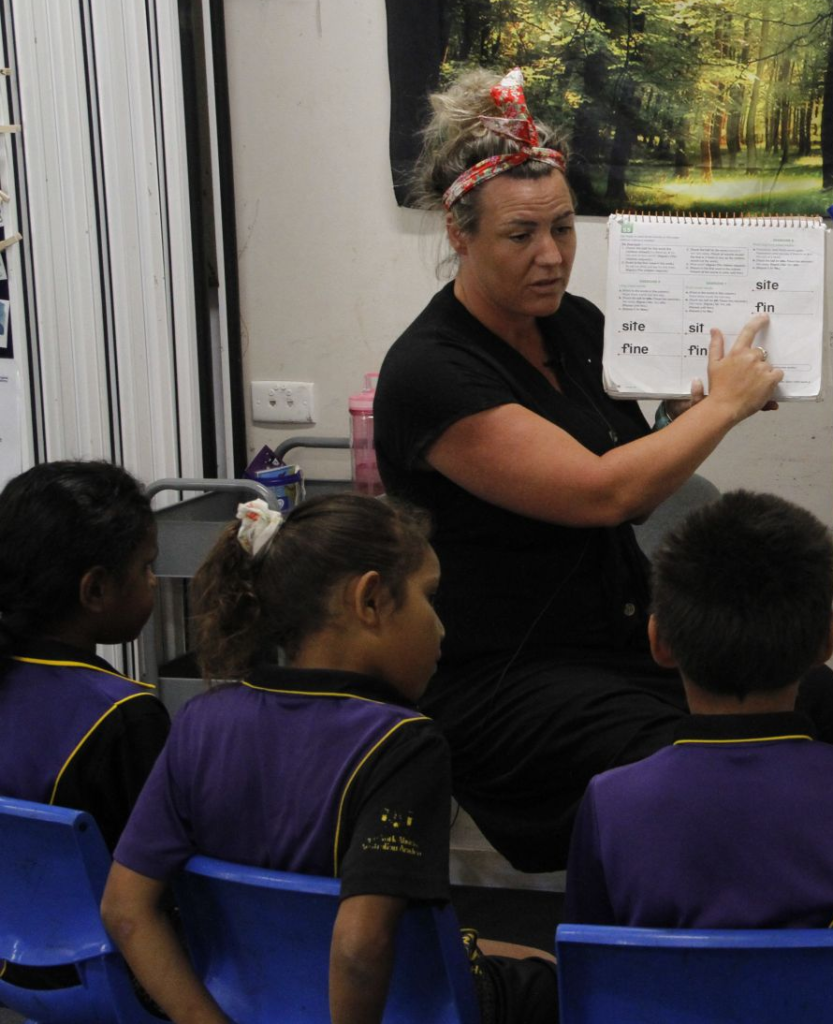Practice Use Signals
-
Module introduction2 Topics
-
Delivered With Fidelity26 Topics|2 Tests
-
Cover
-
Module Objective
-
What Happens when the Technique is Delivered with Fidelity
-
Parts of a Signal
-
Parts of a Signal Continued
-
Video: Parts of a Signal
-
Types of Signals and when they are Used
-
Video: Hand-drop Signal
-
Video: Auditory Signal
-
Video: Point-touch Signal
-
Video: Point-touch Slide Signal
-
Video: Fingers signal
-
Video: Digits Signal
-
Video: Looping Signal
-
Attention Signal
-
Using Signals Effectively
-
Allows the Teacher to Check for Mastery
-
Allows the Teacher to Check for Mastery
-
Allows Students to Actively Engage in the Lesson
-
Allows Students to Actively Engage in the Lesson
-
Video: Allows Students to Actively Engage in the Lesson
-
Provides Students with Valuable Practice
-
Provides Students with Valuable Practice
-
Check your understanding
-
Test your understanding
-
Lesson Completed
-
Cover
-
Not Delivered With Fidelity14 Topics|2 Tests
-
Cover
-
What happens when Technique is not Delivered with Fidelity
-
Not using Signals Effectively
-
Video: Not using Signals Effectively
-
Doesn’t Allow the Teacher to Check for Mastery
-
Doesn’t Allow the Teacher to Check for Mastery
-
Students do not Actively Participate in the Lesson
-
Students do not actively Participate in the Lesson
-
Video: Teacher Demonstrating Error when Signalling
-
Students do not get Adequate Practice and Confidence Drops
-
Students do not get Adequate Practice and Confidence Drops
-
Check your understanding
-
Test your understanding
-
Lesson Completed
-
Cover
-
Barriers That Impede Fidelity9 Topics|2 Tests
-
Cover
-
Barriers that Impede Delivery of the Technique with Fidelity
-
Using Deductive Logic to Identify the Cause of the Barrier
-
Not Understanding why Using Signals Effectively is Required
-
Not Understanding How to Use Signals Effectively
-
Unfamiliar with Lesson Content
-
Check your understanding
-
Test your understanding
-
Lesson Completed
-
Cover
-
Removing Barriers That Impede Fidelity12 Topics|2 Tests
-
Cover
-
Ways to Tackle Barriers so Technique is Delivered with Fidelity
-
Understand why Using Signals Effectively is Required
-
The Process
-
Learn how to Use Signals Effectively
-
The Process
-
Become Familiar with Lesson Content
-
The Process
-
Video: Practice Makes Signalling Perfect
-
Check your understanding
-
Test your understanding
-
Lesson Completed
-
Cover
-
Module evaluation survey1 Topic
Participants 521
Not using Signals Effectively
ddewell@goodtogreatschools.org.au August 7, 2023

Not using Signals Effectively
Alice (teacher) is teaching a reading lesson where students are asked to say sounds. Alice is using the ‘fingers signal’. She gives the instruction, “Let’s say some sounds. Listen to the sound…mmmm. When I hold up my finger, we are going to say mmmm”. Alice signals before giving the cue. She is not using all parts of the signal correctly. She also varies the timing of her signals. The students are confused and are unsure of when to provide their response. Some students do not respond at all, while others respond late. Alice continues with the exercise, moving through the sounds in the exercise. During ‘individual turns’, it becomes clear that not all students have mastered the content. Alice must go back and reteach that part of the lesson to ensure that students are firm. This results in the loss of valuable learning time in that week.


